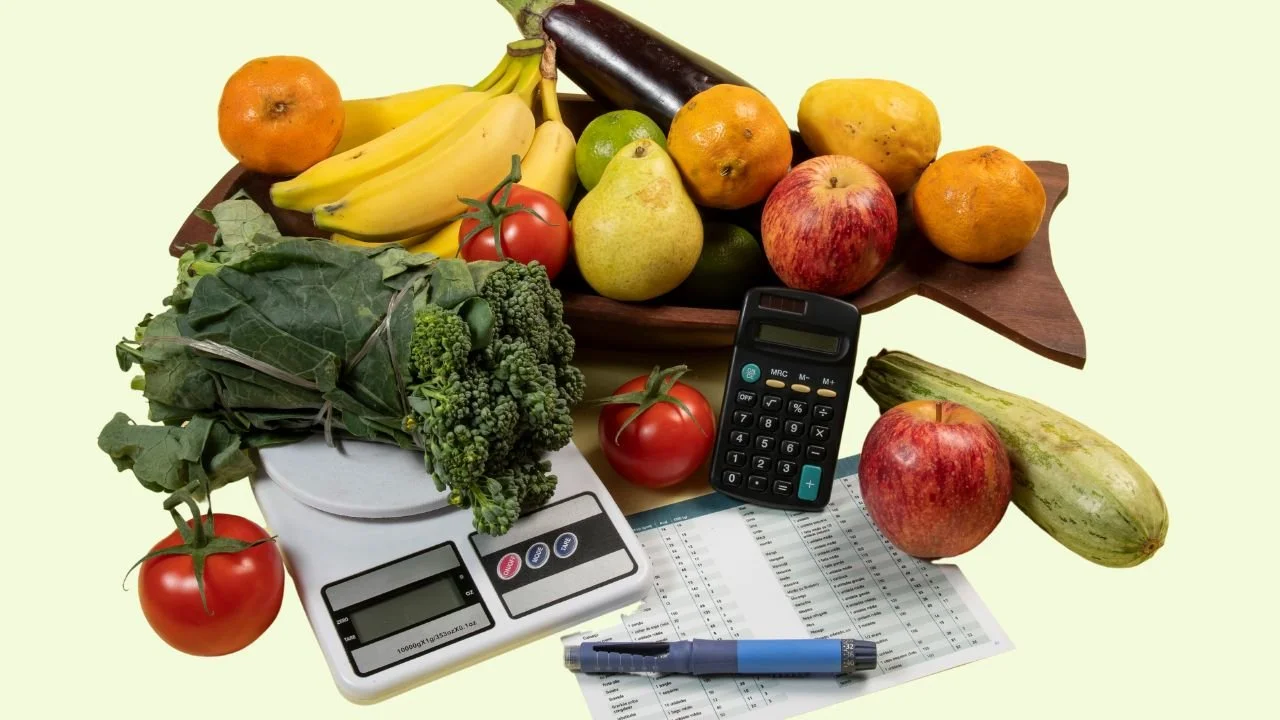Counting Carbohydrates
Simply put:
Total Carbs refers to all the carbohydrates in a food. This includes the fiber, the sugars and the sugar alcohols in a food. Net Carbs refers to a portion of the carbohydrates in a food. Depending on what label or recipe you are reading, this could mean:
Total carbohydrates minus the fiber
Total carbohydrates minus the fiber and the sugar alcohols
Total carbohydrates minus the fiber and half the sugar alcohols
Which is right for you: Total Carbs or Net Carbs?
Most sources, when they talk about "Net Carbs" are referring to total carbohydrates minus the fiber and all the sugar alcohols. When you see a processed food that screams at you: "ONLY THREE NET CARBS," it is indeed referring to this scenario. The carb camps are many and varied. One person isn't better than another for eating only total carbs. However, you may find larger and swifter success with 20 Total Carbs but, even when doing Net Carbs, you can find success. Oftentimes though, that success will depend a lot on your age, fitness and state of health. For instance, I started my journey with extremely high fasting insulin. It was close to 50, while normal is 5 or less. There is no way I could have eaten 20, 30 or more Net Carbs and have lost the weight I did or have brought down my fasting insulin levels (last test it was at 12) or have brought down my A1c (5.2 now instead of over 6!). Very simply, carbohydrates raise your insulin level. Higher insulin results in insulin resistance that leads to higher blood glucose (sugar) levels. Higher blood glucose levels cause fat storage, which leads to weight gain or stubborn fat loss. Perhaps eat 20 Total Carbs or fewer (to start), but allow some flexibility to make the Keto way of eating successful for you.
Being flexible about the carbs helps sustain a Keto lifestyle
What do I mean by flexibility? After almost a year of eating Keto by consuming 20 Total Carbs daily, I felt somewhat "strangled" by the restriction: an ample salad, alone, would bring me to 20 total carbs for the day. I worked out a system that still, to this day, has brought me, and my clients, success. I love vegetables. I mean LOVE them. I did a lot of research and realized that, once I learned the Net Carb count of leafy green vegetables and other non-starchy vegetables such as cucumbers, celery, asparagus, etc. (also avocado is included in this Net Carb allowance), I could take the Net Carbs of those and add them to my Total Carbs (such as those for dairy or eggs) and, as long as that total was 20 or fewer, I would be successful with weight loss and continue to heal my insulin resistance.
See my video here of combining net carbs and total carbs for a more comfortable fit if you find counting total carbs too restrictive to start. It doesn’t give you enough rope to hang yourself, but loosens the noose a little bit.
Watch this video that explains my Flexibility System. (Don’t be confused! That was me when I started my coaching business as “Granny Keto”.)
When you watch the video note how much food this is!!! You do not have to fear "only" 20 carbs a day!
Notice, too, that all the Net Carbs are coming only from fresh (non-starchy) vegetables and avocado.
How to make Net Carbs and Total Carbs work for your Keto plan
I know what my salad looks like. If I bring basically the same lunch salad to work every day I do not have to write everything down. I know my salad with ½ an avocado counts as 8 carbs. I can use protein that has virtually no carbs to count (for instance the left-over beef from dinner the night before) or I can add cheese or a couple of hard-boiled eggs or some sliced salami. I use either ample olive or nut oil with vinegar or a luscious full-fat dressing. The combinations (protein, fats, vegetables) are endless, and such a large lunch will hold me until dinner.
What I suggest is that you make your own chart using your favorite foods. Work with Dancing with Keto. Further, if you learn to eat in a mindful manner, Keto becomes even less cumbersome!
It is not rocket science – you just need to do a little math – trust me!
Thank you for taking the time to read this blog, Counting Carbohydrates, and I hope it will help you navigate your journey. Don't forget to subscribe to the mailing list (below) so that you don't miss the next blog! If you are interested in my course, Keto Fundamentals, please take a look at it here.

